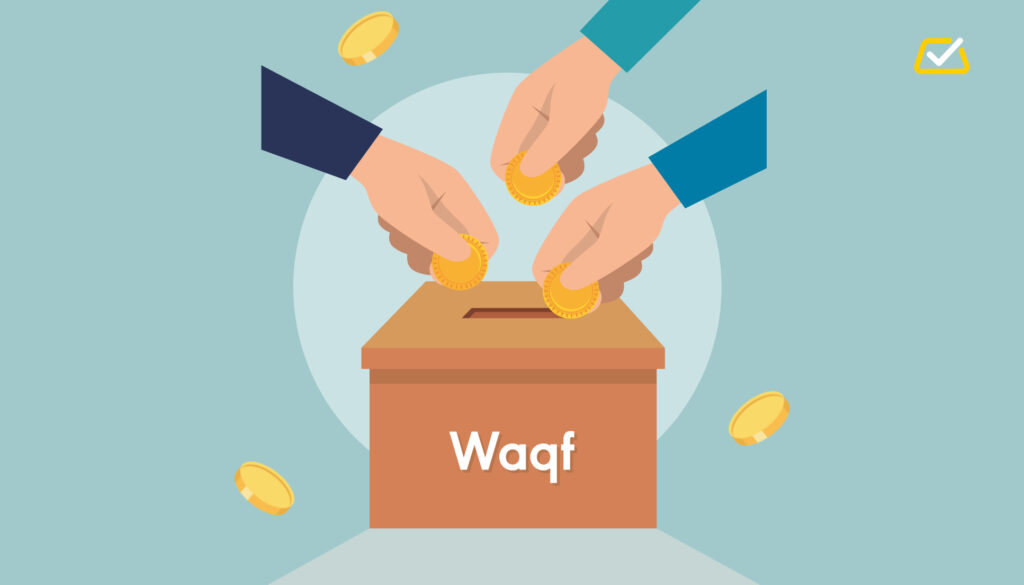The government has launched a new Central Waqf Portal that will issue a 17-digit unique identification number exclusively to waqf properties registered with state waqf boards. This initiative aims to enhance transparency and regulatory oversight by enabling only officially registered waqf properties to upload their details on the platform for verification. The portal also extends this facility to “waqf by user” properties that existed before the Waqf Amendment Act 2025, which came into effect on April 8.
This move forms part of broader reforms designed to streamline waqf property management across the country, addressing long-standing challenges related to documentation, ownership disputes, and financial irregularities. Waqf properties, which are endowed assets dedicated to charitable or religious purposes under Islamic law, have often faced issues arising from incomplete records and limited oversight at the state level.
The Central Waqf Portal will serve as a comprehensive digital repository, facilitating a centralised and standardised system for registering and monitoring waqf properties. The new 17-digit unique ID is intended to act as a definitive identifier, preventing duplication and enhancing accountability among waqf boards, custodians, and beneficiaries.
Only waqf properties that have been formally registered with the respective state waqf boards will qualify to use the portal’s services, reflecting the government’s focus on strengthening formal recognition and regulation of waqf assets. The verification process on the portal will validate uploaded property details, thereby ensuring that only genuine waqf endowments receive legal recognition and associated protections.
The inclusion of “waqf by user” properties predating the Waqf Amendment Act 2025 recognises the reality of waqf assets that were created and utilised before the latest legislative changes. These properties, though in existence prior to the amendment, must still meet registration criteria to benefit from the unique ID system. This reflects the government’s intent to bring historical waqf endowments under a unified regulatory framework without disenfranchising existing stakeholders.
The Waqf Amendment Act 2025 introduced significant changes to waqf property administration, aiming to improve transparency, prevent encroachments, and optimise revenue generation from waqf assets. The act mandates stricter registration norms and greater state board oversight, which has been a key concern for authorities and community leaders alike.
The portal launch is expected to aid waqf boards in generating detailed, verifiable records that are accessible to relevant authorities and stakeholders. This digital infrastructure supports the government’s larger digital governance agenda, promoting ease of access, data security, and timely updates on waqf property status.
By facilitating property registration and unique identification, the portal addresses several critical challenges. One longstanding problem has been the fragmented nature of waqf asset records, which vary widely across states and jurisdictions. Many waqf properties suffer from unclear ownership status, lack of proper documentation, and administrative inefficiencies, which often lead to disputes and loss of revenue for charitable activities.
The unique ID system is expected to play a pivotal role in resolving these issues by creating a clear chain of custody and ownership, enabling better legal protection for waqf properties. It will also aid in curbing unauthorised occupation or misuse of waqf land, which has been a persistent problem.
Officials involved in the portal’s development emphasise that this step is aligned with the government’s commitment to modernising waqf property management. By digitising records and introducing standardised identifiers, the administration aims to foster better governance, reduce manual errors, and enable data-driven decision-making.
State waqf boards have been tasked with the responsibility of ensuring that only verified properties receive unique IDs on the portal. This places greater accountability on the boards to maintain accurate and up-to-date records, which could improve their operational efficiency and responsiveness to grievances.
Stakeholders in the waqf ecosystem, including religious bodies, community organisations, and legal experts, have expressed cautious optimism about the portal’s potential benefits. Many highlight the importance of rigorous implementation and user education to ensure that the portal achieves its objectives without marginalising smaller or less-resourced waqf institutions.
The inclusion of “waqf by user” properties within the portal’s framework is particularly significant, as it acknowledges informal or customary waqf endowments that might have escaped formal registration. This provision could encourage more waqf holders to come forward for registration, thereby expanding the database and bringing more assets under the purview of official regulation.
Technical experts have pointed out that the 17-digit unique ID format is designed to be robust and scalable, allowing for integration with other government databases and financial systems. This interoperability could open avenues for waqf boards to access government schemes, subsidies, or developmental funds more efficiently.
While the portal primarily targets property registration and verification, it could eventually evolve into a multifunctional platform offering ancillary services such as legal aid, dispute resolution, and financial management tools for waqf boards and users.
The government’s decision to limit portal access to registered properties underscores a focus on formalisation, which may lead to the phasing out of unregistered waqf holdings that lack proper legal standing. This could have socio-economic implications for some communities, necessitating careful handling to avoid disenfranchisement.
This digital reform is part of a broader trend among several countries seeking to digitise religious and charitable endowments to enhance transparency and maximise social impact. The Central Waqf Portal sets a precedent for integrating technology with traditional property management practices in a sector that historically has been resistant to change.




 India Advances Chenab-Ravi-Beas-Sutlej Link Canal Project
India Advances Chenab-Ravi-Beas-Sutlej Link Canal Project 